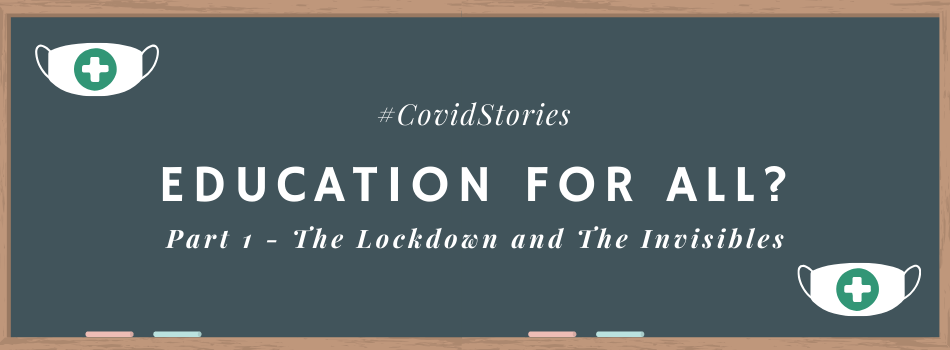
#1 The Lockdown and The Invisibles
Dr Pravin Patkar
Director, Anti-Trafficking Center
Azra Qaisar
Senior Project Co-ordinator
Since December 2019, most of the world has been affected by the novel coronavirus. The virus which has now been declared a global pandemic has changed the functioning of the world as we know it. In the absence of an anti-viral and curative medical regime, the undisputed most powerful intervention that all countries adopted was that of ‘social distancing’ at the personal level and ‘lockdown’ at the public and macro-structural levels. The scientists and the administrators sought time by locking down the countries, asking people to stay home and thereby bringing down the burden of the fast-spreading fatal infection.
The lockdown brought the wheels of economic activities to a complete grinding halt, the curfew on physical mobility and the shutdown of all economic activities instantly hit the marginalized population below the belt, endangering their very survival. Lack of experience, low level of organization, and lack of planning led to compounded teething problems in managing a pandemic and clampdown of a national level. In the metropolitan areas, it took almost two weeks for the food grains (mainly limited to rice and wheat) to reach the needy who were held captive in their homes. The plight of those dispersed far off is indescribable. As expected the urban upper and middle classes found a way out to meet their dietary requirements and found new equilibrium in their newly defined material life. They compensated their loss of cultural life by exchanging a variety of entertainment products on social media and messaging platforms.
The magnitude of the problem is witnessed in the marginalized migrant and semi-migrant sections – the landless, assetless, the daily-wage earners, the socio-culturally depressed classes, the lower castes, the landless nomadic & semi-nomadic tribals, and the people living at the bare subsistence level – who form a large majority of the Indian population. They live an extremely fragile and exploited or neglected life, suffering as the most powerless and neglected.
Yet, the heaviest price of lockdown is being paid by the children. At present, only one segment of children has access to online education, through e-learning and digital classrooms. These children are likely to make it back to school after the crisis subsides. However, there are many children who are not so fortunate. Their link to the education system has been cut off by the lockdown and there is no telling if their socio-economic and cultural conditions will allow them to return to school. These are the invisible children – first generation learners, children of migrants, of people employed as daily wage earners or in the informal sector, students at Ashram or tribal schools, children who live on the street, children in child care institutions, children born in the brothels of the red-light areas, and so on.
Over the past few weeks of India being in the lockdown, the discourse on navigating the crisis on COVID19 has largely not been inclusive of the working classes and low-income households. Hence, it is no surprise then that while national and state-level bodies are working to ensure that children are able to manage their studies remotely or through the internet, socio-economically marginalized groups find little or no mention in the plan. Institutions like municipal schools, local level (government) schools, tribal, and Ashram schools are absent in these discussions. The government has brought back students in different parts of the country to their hometowns, including those preparing for competitive exams like UPSC, IIT-JEE, etc. However, the same cannot be said for the children of migrants who can be seen walking hundreds of miles with their parents. These children do not know if and when they will get their next meal, let alone a chance at accessing education. Many of them will drop out of school, and may not get a chance to pursue education.
Over the next few posts, through this series, we hope to focus on the issues related to the education of the marginalized children and the cumulative inequalities that are compounded by the digital divide through the solution of ‘online education’.
To be or not to be? Questions on motherhood searching answers
This blog is a part one of our “Education for All?”. Over the next few posts, we will discuss the impact of the lockdown on education. Through this series, we hope to provide a quick understanding of the obvious repercussions of the lock-down brought by the spread of Covid-19 on education.
The blog post was first published on Dr. Pravin Patkar's Blog 'Expressions'. The post sheds light on the impact and Read more
In the current COVID and lockdown situation, one of the adversely affected communities is the migrant communities. Our Sanmaan project Read more



